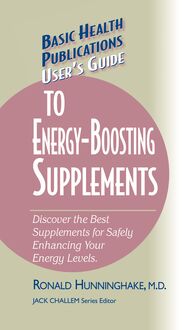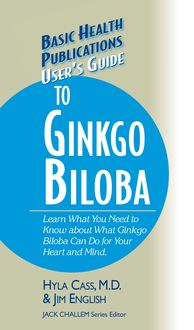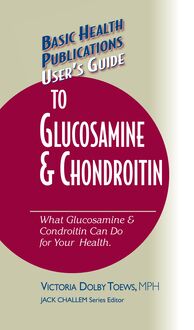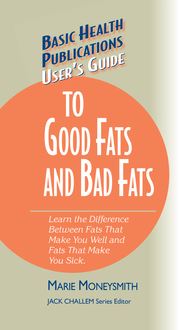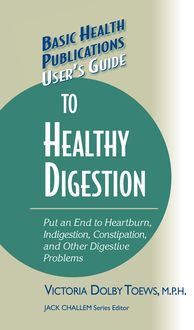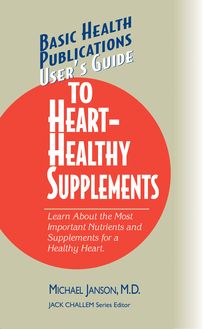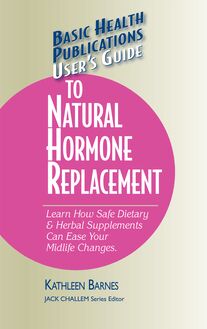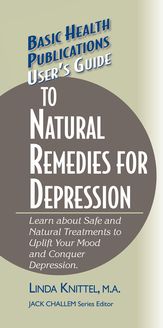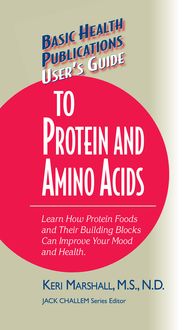-
 Univers
Univers
-
 Ebooks
Ebooks
-
 Livres audio
Livres audio
-
 Presse
Presse
-
 Podcasts
Podcasts
-
 BD
BD
-
 Documents
Documents
-
- Cours
- Révisions
- Ressources pédagogiques
- Sciences de l’éducation
- Manuels scolaires
- Langues
- Travaux de classe
- Annales de BEP
- Etudes supérieures
- Maternelle et primaire
- Fiches de lecture
- Orientation scolaire
- Méthodologie
- Corrigés de devoir
- Annales d’examens et concours
- Annales du bac
- Annales du brevet
- Rapports de stage
La lecture à portée de main
Vous pourrez modifier la taille du texte de cet ouvrage
Découvre YouScribe en t'inscrivant gratuitement
Je m'inscrisDécouvre YouScribe en t'inscrivant gratuitement
Je m'inscrisEn savoir plus
Vous pourrez modifier la taille du texte de cet ouvrage
En savoir plus

Description
Sujets
Informations
| Publié par | Turner Publishing Company |
| Date de parution | 15 mars 2005 |
| Nombre de lectures | 0 |
| EAN13 | 9781591206859 |
| Langue | English |
| Poids de l'ouvrage | 1 Mo |
Informations légales : prix de location à la page 0,0298€. Cette information est donnée uniquement à titre indicatif conformément à la législation en vigueur.
Extrait
The information contained in this book is based upon the research and personal and professional experiences of the author. It is not intended as a substitute for consulting with your physician or other healthcare provider. Any attempt to diagnose and treat an illness should be done under the direction of a healthcare professional.
The publisher does not advocate the use of any particular healthcare protocol but believes the information in this book should be available to the public. The publisher and author are not responsible for any adverse effects or consequences resulting from the use of the suggestions, preparations, or procedures discussed in this book. Should the reader have any questions concerning the appropriateness of any procedures or preparations mentioned, the author and the publisher strongly suggest consulting a professional healthcare advisor.
Series Editor: Jack Challem
Editor: Tara Durkin
Typesetter: Gary A. Rosenberg
Series Cover Designer: Mike Stromberg
Basic Health Publications User’s Guides are
published by Basic Health Publications, Inc.
28812 Top of the World Drive
Laguna Beach, CA 92651
949-715-7327
Copyright © 2005 by Keri Marshall, M.S., N.D.
ISBN 13: 978-1-59120-685-9
ISBN: 1-59120-157-8
All rights reserved. No part of this publication may be reproduced, stored in a retrieval system, or transmitted, in any form or by any means, electronic, mechanical, photocopying, recording, or otherwise, without the prior written consent of the copyright owner.
Printed in the United States of America
10 9 8 7 6 5 4 3 2 1
C ONTENTS
Introduction
1. What Is a Protein?
2. What Are Proteins Made Of?
3. Role of Proteins in the Body
4. Benefits of Protein Supplementation
5. When to Use Individual Amino Acids
6. Shopping for Protein and Amino Acid Supplements
7. Protein and Popular Diets
8. Pros and Cons of a High-Protein Diet
Conclusion
Appendices
A. Amino Acid Dosing Recommendations
B. A Comparison of Amino Acid Content
C. Glycemic Index Reference Guide
Selected References
Other Resources
I NTRODUCTION
I t seems hard to believe that protein—a nutrient absolutely essential for life—has become controversial. This User’s Guide demystifies protein and explains its many health benefits, as well as the importance of supplemental amino acids, which are the individual building blocks of protein.
Next to water, protein is the most abundant substance in the body. Approximately 20 percent of total body weight is made up of protein. Skin, hair, nails, muscles, eyes, and internal organs such as the heart and brain are largely made of protein.
Dietary protein is absolutely essential for growth and development of the human body. A diet absent in protein leads to malnutrition and ultimately death. As you can see, protein is an essential part of nutrition, as well as a primary component of the body’s composition.
Proteins play a critical role in virtually every physiological and biochemical process in the body. Proteins serve as cell communicators through the action of neurotransmitters. They are also essential for blood clotting, immune system development, and formation of milk during lactation.
A balanced diet should provide sufficient amounts of high-quality protein from a variety of sources. All proteins are not the same. For example, vegetable-based proteins provide different properties than animal-based proteins.
Between the pages of the User’s Guide to Protein and Amino Acids you will learn all about amino acids. You will discover how a particular sequence of amino acids strung together determines the unique qualities of a protein. Certain amino acids can be found in high amounts in some proteins, while they are absent in other proteins.
Any discussion of protein would not be complete without a discussion of the many diets being promoted today that are based on dietary protein intake. “Fewer carbohydrates, more protein” seems to be all we hear lately with regard to dieting. Is this the best advice?
The User’s Guide to Protein and Amino Acids explores different diets that are popular today. Fact is separated from fad regarding both high- and low-protein diets. You should walk away from this book with an understanding of how some diets are beneficial for short-term, rapid weight loss, while others are ideal for weight maintenance.
In the following chapters you will begin to understand the complex nature of proteins and the impact of protein intake on body weight and overall health. In addition, this User’s Guide will discuss the therapeutic benefits of different protein supplements, as well as individual amino acid supplements.
CHAPTER 1
W HAT I S A P ROTEIN ?
P rotein was the first substance to be recognized as an essential part of health. The name “protein” was derived from the Greek word meaning “of first importance.”
Proteins, like carbohydrates and fats, are considered to be organic matter because they are made up of carbon, oxygen, and hydrogen molecules. These molecules, in combination, are responsible for the living tissues of plants and animals. Proteins are unique in that, unlike carbohydrates and fats, they are also made up of a nitrogen molecule.
“Amino acid” is the name given to the basic structural unit of proteins. Nitrogen molecules are combined with hydrogen molecules to make what is called an amino group (see Figure 1). Each amino acid also has a carboxyl group, which is made up of carbon, oxygen, and hydrogen. Amino acids have what is called an “R” group, which is a side group that distinguishes one amino acid from another.
Amino groups and carboxyl groups are not chemically reactive. Essentially, they are the stable part of an amino acid. The side group is what characterizes an amino acid and ultimately decides its fate. Amino acids can be charged or uncharged, acidic or basic.
To date, more than 300 amino acids have been described in nature. Of the 300, only 20 are commonly found in mammals.
Figure 1. Amino Group
WHERE DOES PROTEIN COME FROM?
Protein is one of three available energy sources found in food. Fats and carbohydrates also provide the body with energy from food. When food is ingested, the body is able to metabolically convert a usable form of energy called a calorie. Per gram of protein ingested, the body is able to manufacture 4.0 calories. For carbohydrates, 1 gram is also equivalent to 4.0 calories. One gram of fat, on the other hand, is equivalent to 9.0 calories.
ENERGY DERIVED FROM FOOD 1 gram Calories Protein 4.0 Carbohydrates 4.0 Fat 9.0
Foods high in protein are complete proteins in that they have sufficient quantity and variation of all twenty amino acids. Examples of complete proteins are animal-based foods such as fish, poultry, beef, pork, and wild game. Eggs and dairy products also have sufficient amino acid composition and are considered complete.
NITROGEN: WHERE DOES IT COME FROM AND WHERE DOES IT GO?
Plants make protein from nitrogen that is obtained from ammonia and nitrates found in soil. Some plants, such as legumes, have the ability to extract nitrogen from bacteria in the atmosphere surrounding it. Animals obtain their nitrogen from eating plants and animals. When a plant or animal dies, the nitrogen in its fleshy tissue decomposes and nitrogen is returned to the soil.
THE QUALITY OF PROTEIN
Protein foods have been classified according to the body’s ability to digest and utilize them. The measurement of how efficiently our bodies utilize protein is called net protein utilization ( NPU ). This number is determined by the ratio of weight gained by a person on a particular protein to the weight that person gains on casein, a known high-quality protein derived from cow’s milk. This number is based upon the assumption that weight gain is proportional to the gain in body protein. This method determines whether or not a protein source has all twenty amino acids and in correct ratios.
NPU Net protein utilization; tells us how efficiently our bodies use a particular protein source.
Eggs from chicken are considered to have the highest NPU. After eggs, in descending order, are fish, cow’s milk and cheese, brown rice, red meat, and poultry. It is important to understand that this number is not based on actual grams of protein but on how efficiently the body utilizes these grams. Brown rice, while high on the NPU list, is not a complete protein; that is, it does not contain all twenty amino acids. Eggs are highest on this scale because they have as close to a perfect amino acid ratio as is possible.
HOW DO YOU DIGEST A PROTEIN?
Proteins are too large to be absorbed by the intestines, so they must be broken down before they reach that part of the digestive tract. Physical breakdown of protein begins in the mouth as you chew your food. Chewing food signals your stomach to begin enzymatic secretion of hydrochloric acid and pepsin. This begins the direct process of breaking peptide bonds, which hold proteins together.
From here, smaller protein fractions enter the small intestine. The pancreas releases a series of enzymes, such as cholecystokinin and secretin, which further break down peptide bonds. These small peptides, called oligopeptides, enter the epithelial cells of the small intestine. Another enzyme, aminopeptidase, repeatedly breaks off the N-terminal residue, which is the amino or nitrogen group, from the oligopeptide to make free amino acids.
Free amino acids are absorbed by the intestinal cells and are hydrolyzed to other amino acids before they enter the blood. From here, amino acids are either metabolized by the liver or sent into general circulation to be utilized.
A large proportion of amino acids are absorbed and utilized immediately by the epithelial cells of the small intestine. Intestinal cells are metabolically very active and require a continual supply of the amino acids glutamine and arginine.
WHAT ENERGY FORM DOES THE BODY PREFER
-
 Univers
Univers
-
 Ebooks
Ebooks
-
 Livres audio
Livres audio
-
 Presse
Presse
-
 Podcasts
Podcasts
-
 BD
BD
-
 Documents
Documents
-
Jeunesse
-
Littérature
-
Ressources professionnelles
-
Santé et bien-être
-
Savoirs
-
Education
-
Loisirs et hobbies
-
Art, musique et cinéma
-
Actualité et débat de société
-
Jeunesse
-
Littérature
-
Ressources professionnelles
-
Santé et bien-être
-
Savoirs
-
Education
-
Loisirs et hobbies
-
Art, musique et cinéma
-
Actualité et débat de société
-
Actualités
-
Lifestyle
-
Presse jeunesse
-
Presse professionnelle
-
Pratique
-
Presse sportive
-
Presse internationale
-
Culture & Médias
-
Action et Aventures
-
Science-fiction et Fantasy
-
Société
-
Jeunesse
-
Littérature
-
Ressources professionnelles
-
Santé et bien-être
-
Savoirs
-
Education
-
Loisirs et hobbies
-
Art, musique et cinéma
-
Actualité et débat de société
- Cours
- Révisions
- Ressources pédagogiques
- Sciences de l’éducation
- Manuels scolaires
- Langues
- Travaux de classe
- Annales de BEP
- Etudes supérieures
- Maternelle et primaire
- Fiches de lecture
- Orientation scolaire
- Méthodologie
- Corrigés de devoir
- Annales d’examens et concours
- Annales du bac
- Annales du brevet
- Rapports de stage



